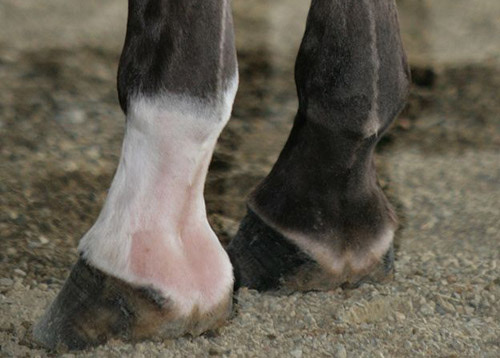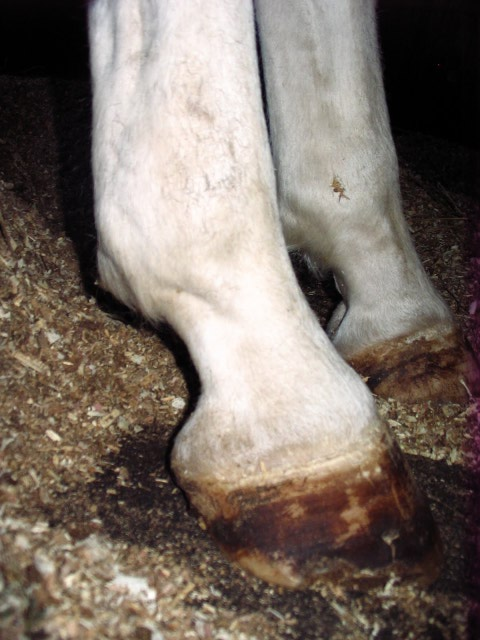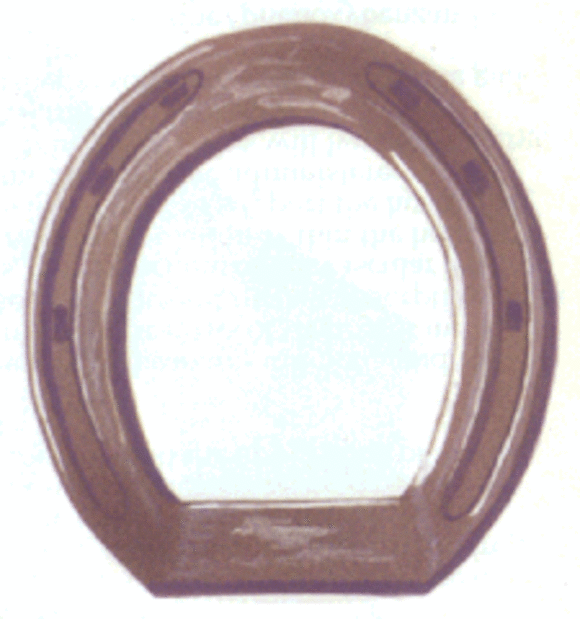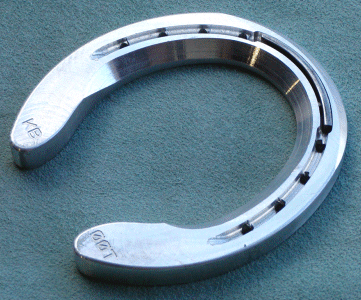QuestionHi,
I was given a thoroughbred mare that has absess' like crazy. So far since ive had her we've caught one before it got bad but shes still limping and its funny to watch her move on the leg but I dont want to ride her if shes hurting. Shes an ex racer and has the healed broken leg and the typical things. But she has some reall thin walls and it makes me nervous to ride her for I live on paved roads. What can I do to save her the pain and not have to keep spending money on shoes to save her from the rocks in my arena??
My gelding has recently been diagnosed with navicular. My ferrier is coming to help with this. He is going to use a paste type thing that makes a rubber like cushon between the shoe to relieve some pain. Right now he is barefoot with a daily dose of bute. He has lost tons of weight and can barely walk without looking like hes falling over.
AnswerHi Stephanie .. sounds like you have your hands full.
As for your TB ... is she abscessing in the same area all the time? If so the abscess just is not resolving. For ANY abscesses that have already burst and need to resolve the Homeopathic Remedy called "Silicea" is a Godsend. I've seen 5 year old abscesses (yeah! 5 years of abscessing) clear up in just a few days after giving the animal this remedy. I recommend getting Silicea 200C and giving just one dose. But, in addition to giving this remedy you need to get on board with your veterinarian and get some digitals to see just what's going on in the hoof and lower leg. I know the remedy will help the abscessing, tho.
Walking her, in hand, for 10 mins. a day minimum on a smooth, level tarred road, BAREFOOT (your horse, not you! *grin* is an little exercise that helps the hooves start conditioning up and healing quickly as the circulation is greatly increased through stimulation and the hooves are becoming used to tough surfaces ... think in terms of walking, yourself, barefooted on a smooth, level tarred road and in days you'll be pretty comfortable, barefooted, on almost any surface. The same applies to horses. That is, any underlying pathologies are not rearing their ugly heads.
As for your navicular guy - Without actually SEEING the hooves or clear, clean photos of the hooves as well as xrays, I can't say one way or another what is going on or what might be best. I do know that I've had 99% success with remediating nav. syndrome without shoes but the trim and husbandry of the horse is paramount to successful healing. The trim MUST be absolutely correct for the "hoof in hand" on the "horse in hand" ... doesn't matter what "method" of trimming is used because there's only ONE method that is "right" and that's the particular trim for the individual hoof and horse. I would say that if your horse is in that much pain then there are other pathologies going on that need to be taken care of and treated as well as the trim, (form and functioning) of the hooves is not right and needs assessment and corrections.
Hope some of this is helpful to you.
:) -- Gwen

 white legged horses - cracked heels
Question
white legged
hello, may i know why whit
white legged horses - cracked heels
Question
white legged
hello, may i know why whit
 club foot
Question
club foot
hello sir, i believe that thi
club foot
Question
club foot
hello sir, i believe that thi
 eggbar shoes on horses
Question
bar shoe
hello sir, when can i use egg
eggbar shoes on horses
Question
bar shoe
hello sir, when can i use egg
 wedge shoes usage
Question
wedge shoe
hello, may i know when to us
wedge shoes usage
Question
wedge shoe
hello, may i know when to us
 Donkey protein diet
QuestionHello, I read the article on the WLD and your r
Donkey protein diet
QuestionHello, I read the article on the WLD and your r